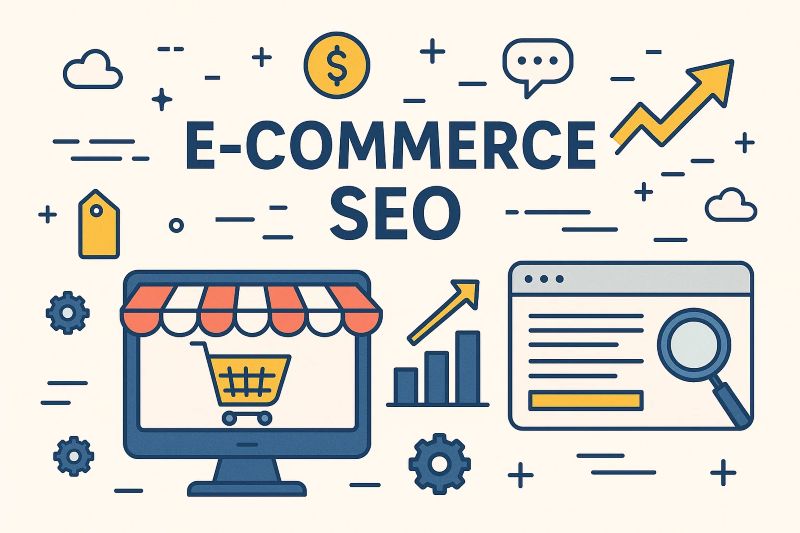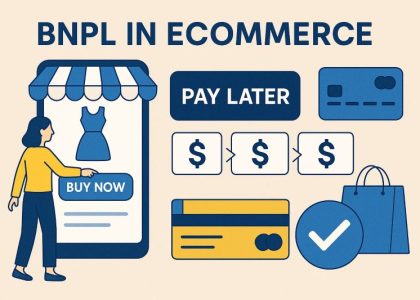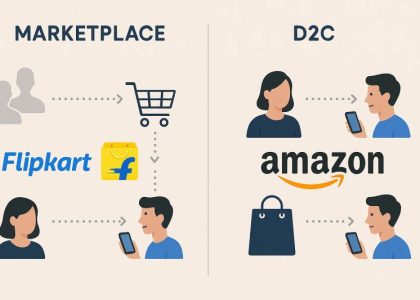Introduction
In 2025, e-commerce is more competitive than ever. Millions of online stores compete for the same audience, making search engine visibility crucial. E-Commerce SEO is the key to driving organic traffic, improving rankings, and increasing sales without relying solely on paid ads.
This blog will cover effective strategies to optimize your e-commerce store for search engines, attract qualified traffic, and convert visitors into loyal customers.
Why E-Commerce SEO Matters
E-commerce SEO helps search engines understand your store, products, and value to users. Optimizing your website ensures that potential buyers find your products when they search online. Benefits include:
- Higher Organic Traffic – Appearing on top search results increases visibility.
- Better User Experience – SEO encourages fast, mobile-friendly, and intuitive websites.
- Increased Sales – More traffic and better targeting lead to higher conversions.
- Cost-Effective Marketing – Organic traffic reduces dependency on paid ads over time.
Top E-Commerce SEO Strategies
1. Optimize Product Pages
Your product pages are the heart of your store. Ensure they include:
- Unique, keyword-rich titles and descriptions
- High-quality images with descriptive alt text
- Clear pricing, shipping, and return information
- User reviews and ratings to build trust
2. Conduct Keyword Research
Identify high-intent keywords that potential buyers use. Include:
- Short-tail keywords for broad visibility
- Long-tail keywords for targeted searches
- Product-specific terms for individual items
Tools like Google Keyword Planner, SEMrush, and Ahrefs can help uncover profitable keywords.
3. Improve Site Structure
A well-organized site enhances both SEO and user experience:
- Use clear categories and subcategories
- Include breadcrumbs for easy navigation
- Implement a logical URL structure with keywords
4. Focus on Mobile Optimization
Over 70% of online shoppers use mobile devices. Make sure your store:
- Loads quickly on all devices
- Uses responsive design
- Offers easy navigation and checkout
5. Enhance Page Speed
Fast-loading pages improve rankings and reduce bounce rates. Optimize by:
- Compressing images
- Minimizing code and scripts
- Using caching and content delivery networks (CDNs)
6. Build High-Quality Backlinks
Backlinks from reputable sites increase domain authority and rankings:
- Collaborate with bloggers and influencers
- Submit guest posts to relevant websites
- List products on authoritative directories
7. Leverage Content Marketing
Content drives traffic, builds trust, and improves rankings:
- Start a blog focused on your niche
- Create buying guides, tutorials, and product comparisons
- Use video content to showcase products and features
8. Optimize for Voice and Local Search
With voice assistants on the rise:
- Include natural, conversational phrases in your content
- Optimize for local search terms if you have a physical presence
- Add structured data for better visibility in rich results
9. Monitor and Improve SEO Performance
Track your progress with tools like Google Analytics and Search Console:
- Monitor organic traffic, rankings, and conversions
- Identify pages with high bounce rates
- Continuously tweak content and technical elements
Conclusion
E-Commerce SEO is not just about ranking—it’s about creating a seamless experience that drives qualified traffic and sales. By optimizing product pages, improving site structure, leveraging keywords, and building high-quality backlinks, your store can outperform competitors in search results.
Implement these strategies consistently, measure results, and adjust based on performance. With the right SEO approach, your e-commerce store can thrive in 2025 and beyond.





